Happy Holidays from FMSL
May 2022 bring you peace, health, and happiness.
Thank you for your continued support and partnership.
May 2022 bring you peace, health, and happiness.
Thank you for your continued support and partnership.
We often refer to the 3rd year a child is in a Montessori program as the Capstone Year. But what is it that really makes the year so special and important? We invite parents of our current 2nd year students in Early Childhood and Lower Elementary and 4th year students in Upper Elementary to consider the following reasons we recommend providing your child with their Capstone Year.
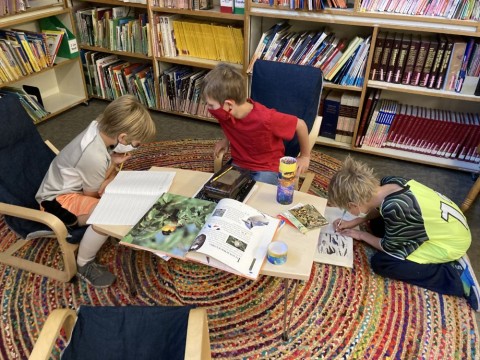
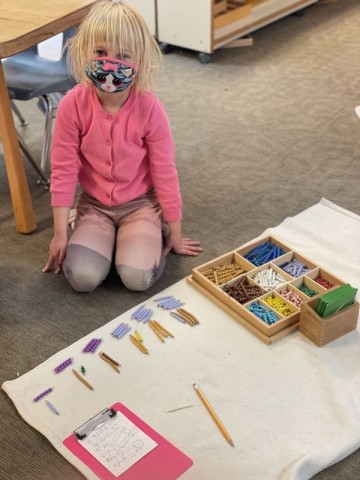
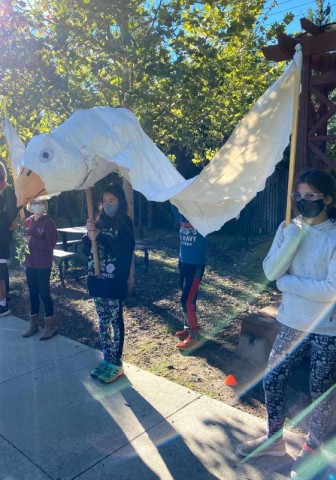
Three, six, nine and twelve years old are natural transitional ages for children. They are the best time for children to move to new classrooms or schools.
While the reasons to leave can be compelling and are worth every consideration, we believe the reasons to stay are worth your careful and thoughtful consideration.
(Adapted from Tim Seldin’s 25 Reasons to Keep Your Child in Montessori Through the Kindergarten Year, Tomorrow’s Child.)
By Jessica Graham, M.D., Pediatric Emergency Physician, FMSL Parent and Thomas Hanff, M.D., Heart Failure Cardiologist, FMSL Parent
Pfizer recently performed an mRNA vaccine trial in children aged 5-11. After study results were released, an emergency use authorization (EUA) was approved for children in this age range. However, some parents still have questions or concerns.
| Reason for Hesitation | Facts About COVID-19 and Vaccination |
| COVID infection is mild in most kids. | The Delta surge has increased hospitalization five-fold among childrena 8300 kids 5-11 have been hospitalized due to COVID-19b,c 30% of kids hospitalized with COVID-19 had no underlying health conditionsb 172 kids aged 5-11 have died from COVID-19 b 2316 kids aged 5-11 have developed MIS-C after COVID-19 2% of kids who get COVID experience post-acute “long-COVID” sequelaed |
| I’m concerned the vaccine will cause my child to have myocarditis. | There were zero cases of myocarditis in Pfizer’s mRNA vaccine trials in kids aged 5-11e* When they occur in older children, the cardiac effects of the COVID virus and MIS-C are more severe than those from the vaccinef |
| I think I’ll just wait to see how other kids do. | Utah’s COVID-19 numbers are still high, with holidays coming up and your child in school, there is a chance they would get COVID while waiting to see what happens to kids getting vaccine Getting vaccinated helps keep vulnerable members of the community (babies, immunocompromised, those who cannot get vaccinated) safec |
| I don’t want to negatively affect my child’s fertility. | There is no evidence that the COViD-19 vaccine causes fertility problemsg |
| I don’t want my kid to have to suffer from the side effects. | The CDC recommends vaccination in children who have had SARS-CoV-2 infectionc Antibody responses to immunization are generally more robust and predictable, and potentially longer lasting, than natural immunity from the infection |
| My child is really good at wearing a mask. | Masks are very helpful at helping prevent infection, but not perfect, especially when infected people aren’t wearing themh |
| I looked at the Vaccine Adverse Event Reporting System and saw some scary side effects . | VAERS is solely a place for people to report things that happen around the time when they get the vaccine; it does not guarantee causationi |
| I’m concerned the vaccine may alter my child’s DNA. | COVID-19 vaccines do not change or interact with DNA in any wayi |
| The vaccine development and testing process was rushed. | Coronavirus and mRNA vaccines have been studied and developed for over 2 decadesj |
| I plan to wait until my 11-year-old is 12 so they can get the higher dose. | The lower dose led to just as robust an immune response with fewer side effectsk |
Trial Detailsl
*In older children (16-29 years), the incidence of myopericarditis after vaccine is 1 per 5,750. Therefore, it is possible that because even if myopericarditis were going to occur at the same rate in the 5-11 age group, the trial would not pick it up because the total number of children in the trial was less than this.
However:
References
a https://www.cdc.gov/mmwr/volumes/70/wr/mm7036e2.htm
b https://www.cdc.gov/vaccines/acip/meetings/downloads/slides-2021-11-2-3/03-COVID-Jefferson-508.pdf
c https://www.cdc.gov/coronavirus/2019-ncov/vaccines/recommendations/children-teens.html
f Vaccine-related myocarditis is milder compared to MIS-C (Comparison of MIS-C Related Myocarditis, Classic Viral Myocarditis, and COVID-19 Vaccine related Myocarditis in Children. Trisha Patel, Michael Kelleman, Zachary West, Andrew Peter, Matthew Dove, AreneButto, Matthew E. Oster; medRxiv 2021.10.05.21264581; doi:https://doi.org/10.1101/2021.10.05.21264581)
g https://www.cdc.gov/coronavirus/2019-ncov/vaccines/planning-for-pregnancy.html
h https://publichealth.jhu.edu/2021/the-long-history-of-mrna-vaccines
An evidence review of face masks against COVID-19, Jeremy Howard, Austin Huang, Zhiyuan Li, Zeynep Tufekci, Vladimir Zdimal, Helene-Mari van der Westhuizen, Arne von Delft, Amy Price, Lex Fridman, Lei-Han Tang, Viola Tang, Gregory L. Watson, Christina E. Bax, ReshamaShaikh, Frederik Questier, Danny Hernandez, Larry F. Chu, Christina M.Ramirez, Anne W. Rimoin. Proceedings of the National Academy of Sciences Jan 2021, 118 (4) e2014564118; DOI:10.1073/pnas.2014564118
i https://www.cdc.gov/coronavirus/2019-ncov/vaccines/facts.html
j https://publichealth.jhu.edu/2021/the-long-history-of-mrna-vaccines
k https://www.healthline.com/health-news/should-11-year-olds-wait-until-they-are-12-to-get-a-covid-19-vaccine
l https://www.fda.gov/news-events/press-announcements/fda-authorizes-pfizer-biontech-covid-19-vaccine-emergency-use-children-5-through-11-years-age
Parents often wonder about the extraordinary lessons of Montessori that seem beyond the norm for young children. An example would be the uniqueness of the Botany Cabinet with its eighteen different leaf shapes and exotic names – obcordate, hastate, and reniform. Or the Geometric Cabinet with its 26 different shapes that children master and become conversant with the differences between obtuse angled isosceles triangles and acute angled scalene triangles as well as knowing quadrilaterals, trapezoids and heptagons

The Montessori classroom provides a unique and solid base from which children launch themselves into life with the beginning skills of adulthood already in use and waiting to be applied to greater and greater challenges.
by Edward Fidellow
Thanks so much for all of your support in helping your student to be prepared for this wonderful opportunity to experience the “Greatest Snow on Earth.”
Your student must have the following items each week:
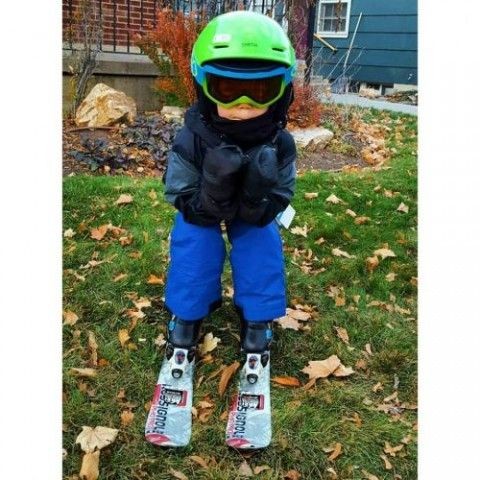
Letting your student practice packing and wearing their gear will set them up for success and make Winter Sports days fun for everyone! Time spent practising putting gear on and off and carrying it around by themselves will allow your child to be confident, comfortable, and independent.
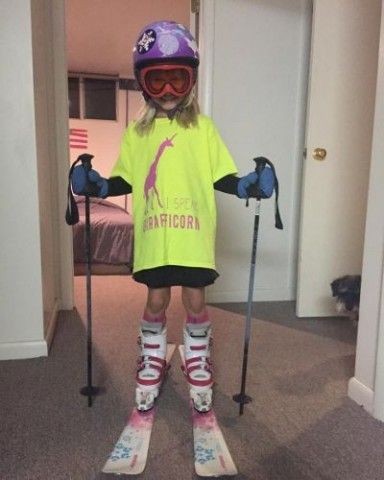
Forms can be accessed using this link.
A common concern for Montessori parents is how their child will transition out of Montessori into a traditional setting. The question is valid but the concern may be overblown. Yes, there will be transition challenges. Those are an integral part of life – preschool to elementary, elementary to Jr. and Sr. High, to college, to a job, to marriage, to parenthood and on and on.
It is certainly nice if life can remain stable and unchanging (well, maybe not the 2:00 A.M. feedings.) But change is inevitable. The first transition for the Montessori child might tend to be more dramatic than for a child that didn’t have the privilege of attending a Montessori school. However, the ability to handle the change is better developed in the Montessori child.
A traditional setting may not be as stimulating for the Montessori child. It may not offer the same opportunities for independent thought, learning and action. It might be more group oriented. It might be more teacher directed. Yes, it will require transition skills from your child. The good news is – your child has been developing adult coping skills all along in his or her Montessori experience. Even if your child can’t use all of the skills he or she has learned, they will not have gone to waste; they will not be lost. They will surface again and again as they are applied creatively to every day situations.
While non-Montessori students may be waiting for direction and instruction, the Montessori student will take the initiative and begin formatting plans for achievement. Though Montessori students have been raised in a non-competitive environment their training in initiative will give them a head start in competitive environments. Success also comes to the Montessori child because he or she already knows how to work with people; how to cooperate; how to collaborate.
The ultimate success that works in transition is that the Montessori student knows how to finish what she starts and that is not affected by whatever kind of environment she finds herself in. You don’t win unless you finish. Montessori children are great at finishing – and winning.
There are going to be challenges but the advantage that your Montessori child takes with him or her are worth the minor inconveniences of transition.
by Edward Fidellow, www.crossmountainmedia.com
The Montessori early childhood classroom serves children from the age of 3 to 6 years. Ideally, children spend three years in this classroom. In Montessori, the 3rd year is often referred to as the Capstone Year. This year is equivalent to the traditional Kindergarten year. FMSL strongly recommends that a 3rd year student follows a 5 day schedule so that they can capitalize on all of the learning opportunities open to them in this important year and so they can have enough time to practise and process the year’s curriculum. The final year in early childhood is the harvest year for all the planting and intellectual tending that has gone on for the preceding years in preschool.
The Capstone Harvest
The 3rd year child’s learning explodes into an avalanche of reading and writing and math. All of the earlier preparation (practical life, sensorial) now finds academic outlets. The 3rd year child not only gains a wider breadth of knowledge but a deeper understanding of what they have learned and now is able to use this knowledge to enhance their own intellectual pursuits.
A Montessori education is not just cumulative in its learning; it is exponential in its understanding. The learning that happens in this final year of early childhood is not just adding another year’s knowledge but multiplying what is learned and applying it to what is to come. It is common for Montessori 3rd year graduates to be able to read well (and write) and to understand math far beyond addition and subtraction all the way to multiplication, division and geometry. Maybe even more significantly, the lifetime patterns of responsibility, goal setting, having a work ethic, working through mistakes, inquiry and curiosity are being firmly set.
The 3rd year in a Montessori classroom is also the year of mentoring. It is the year when the five year old is able to really help their classmates. This mentoring year is significant for two reasons. First, when you teach others, you really master the subject for yourself. Second, when you are asked to teach you demonstrate your mastery of the material. It is this mastery that produces the profound feelings of self-confidence and assurance that is the hallmark of Montessori students. Real achievement and real achievement demonstrated builds real self-esteem.
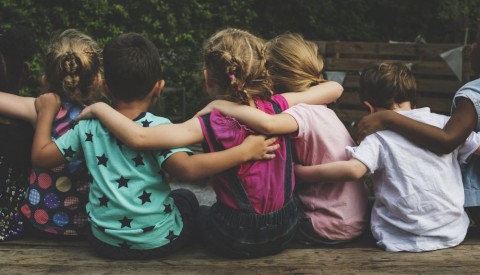
Leaving the Montessori program before the capstone year often places a child into an educational setting that is not as advanced; nor one that allows for the initiative that has been carefully cultivated during the earlier preschool years. The child is often introduced to a different curriculum one that lacks the individual intellectual satisfaction that comes from exploring and discovering the wonderful world of learning found in Montessori.The essence of successful life is to be able to make wise choices. The Montessori 3rd year student is at a major threshold of exercising that wise decision making power. To lose that opportunity is to lose a significant part of the hard won success of the preceding years.
The great gift of an education is not the accumulation of facts and statistics but the lighting of the fire of learning, discovery and joy. It is a gift that Montessori children have the privilege and pleasure of opening and using for a lifetime.
Adapted from The Kindergarten Year in Montessori by Edward Fidellow, www.crossmountainmedia.com
Our gratitude to Jessica and Thomas for providing the following information to our community: MIS-C myocarditis is seen in children after a COVID-19 infection; vaccine-related myocarditis has been described in children after they receive the mRNA vaccine. Which poses the bigger danger for your child?
Multisystem inflammatory syndrome in children is a rare inflammatory condition that occurs in children within 6 weeks after a COVID-19 infection. It can occur even if a child has an asymptomatic infection. This condition can cause inflammation of the skin, eyes, heart, lungs, kidneys, liver, brain and gastrointestinal system. The biggest concern is MIS-C myocarditis, which can cause low blood pressure, dilation of blood vessels in the heart, and a decline in heart function leading to heart failure.a
Out of every 1 million children who get COVID, about 300 will get MIS-C. MIS-C is most common in children aged 6-10. b
Key points:
In addition to ongoing fever, children experience:c
All children with MIS-C are hospitalized. During hospitalization, they receive serial testing (labs, ECGs, echocardiograms to look at heart). Treatment can include IV fluids, blood pressure support, IVIG (antibodies given through a vein), steroids, and/or biologic medications (powerful drugs that stop inflammation). Most children take daily aspirin and are followed by a cardiologist after hospitalization.a
In most children, the biggest danger is MIS-C myocarditis. Some children with MIS-C myocarditis have a depressed left ventricular ejection fraction (the heart pumps less blood when it squeezes), some have diastolic dysfunction (the heart does not fill normally between squeezes), and some have coronary artery dilation (the blood vessels that feed heart tissue are dilated/floppy). Almost all children with these findings recover well; however, long-term data is still being collected.
Fortunately, although MIS-C can lead to severe illness, it is still a relatively rare outcome of COVID-19. However, for children of eligible age, vaccination to prevent COVID-19 remains one of the most effective preventive measures. The vaccine also protects against all the other complications of COVID-19, including death and debilitating long-COVID symptoms. In addition, you should continue to take everyday actions to prevent your child and entire household from getting COVID-19.d
Myocarditis is inflammation of heart muscle. Pericarditis is inflammation of outer lining of heart. Myopericarditis is when both the heart muscle and the outer lining are inflamed. In the case of vaccine related myopericarditis, the inflammation is thought to be in response to the mRNA COVID vaccine.
Out of 1 million people 16 or older who got the Pfizer vaccine, ~ 20 got COVID-related myopericarditis. e Vaccine related myopericarditis has never been described in a child <12; however, data on mRNA vaccine side effects are still being collected.
Key points:
When vaccine related myopericarditis was first described, all children were hospitalized and observed very closely. Some were treated with supportive care (fluids). Most children never needed any medical interventions. Now, most patients with this condition do not need to stay in the hospital but can be followed outpatient by their doctor.
Your child will not get vaccine related myopericarditis if they do not get the mRNA vaccine. However, if they do not get the vaccine, they would be at higher risk of getting MIS-C or COVID-19
| | MIS-C (149 patients) | Vaccine-Related Myopericarditis (9 patients) |
| Age | Median 7.5 years | Median 15.5 years |
| Sex | Predominantly male | Predominantly male |
| Change in heart function (depressed LVEF) | 42% of patients | 22% of patients |
| Discharged on medication for heart | 3% | none |
| Recovery of heart function | Full | Full |
|
|
|
|
|
b. Payne AB, Gilani Z, Godfred-Cato S, et al. Incidence of Multisystem Inflammatory Syndrome in Children Among US Persons Infected With SARS-CoV-2. JAMA Netw Open. 2021;4(6):e2116420. doi:10.1001/jamanetworkopen.2021.16420
c. https://www.cdc.gov/mis/mis-c/hcp/provider-resources/symptoms.pdf
d. https://www.cdc.gov/mis/mis-c.html
e. Witberg G et al. Myocarditis after Covid-19 vaccination in a large health care organization. N Engl J Med2021 Oct 6; [e-pub]. (https://doi.org/10.1056/NEJMoa2110737. opens in new tab)
f. Vaccine-related myocarditis is milder compared to MIS-C (Comparison of MIS-C Related Myocarditis, Classic Viral Myocarditis, and COVID-19 Vaccine related Myocarditis in Children. Trisha Patel, Michael Kelleman, Zachary West, Andrew Peter, Matthew Dove, AreneButto, Matthew E. Oster; medRxiv 2021.10.05.21264581; doi:https://doi.org/10.1101/2021.10.05.21264581)
We are happy and honored that you have entrusted us with your child’s education and look forward to continuing that relationship for the next academic year.
Every family should have received an email from enroll@mcsslc.com on 12/15/2021 called Enrollment for Returning Student explaining how to complete the re-enrollment process for the 2022-23 school year. The email was sent to the same parent/guardian who filled out the application & enrollment forms previously.
Open enrollment for new families begins January 14, 2022. We wish to preserve our current families’ spaces by enrolling your children first. Re-enrollment needs to be completed by January 14, 2022. After this date, spaces will be opened to new families and your child’s placement will no longer be guaranteed.
Unable to attend? Don’t worry, recordings were made of these meetings and are available for watching at your convenience.
If your child is eligible to move into a new program next fall, please consider attending the pertinent informational meeting about that transition. Parents of rising students will receive an email invitation to a virtual meeting for the following date/s:
If your child will not be returning for the 2022-2023 year, please email enroll@mcsslc.com to indicate your decision. Alternatively, log into FACTS Family Portal and click Apply/Enroll -> Enrollment / Re-enrollment and click the button “Will Not Enroll.”
If your family has elected not to return to FMSL next year, we recommend that you wait to relay that information to your child until closer to the end of the academic year. It has been our experience that children who are told in advance of such a change often lose their focus for the balance of the year, and begin the process of separation long before the change is imminent.
We understand that educational decisions are the result of a thoughtful, intentional process and we appreciate our families taking the time when they are considering re-enrollment for another school year. Do not hesitate to contact the Director of Admissions, Ramira Alamilla, at enroll@mcsslc.com if you have any questions or need assistance in this process.
Each year FMSL looks for local charities to support as an opportunity for our entire community to participate in service learning projects. This year we have chosen to give to the IRC, The INN Between, and the Salvation Army. There are two ways to give this year:
All items must be dropped off to the main entrance of the school by December 10. If you are unsure that you can get one of the items on the list by this time, please consider a financial donation so we may purchase items on the list.
If you have donated in-kind or financially please use the following donation receipt for your tax purposes.
